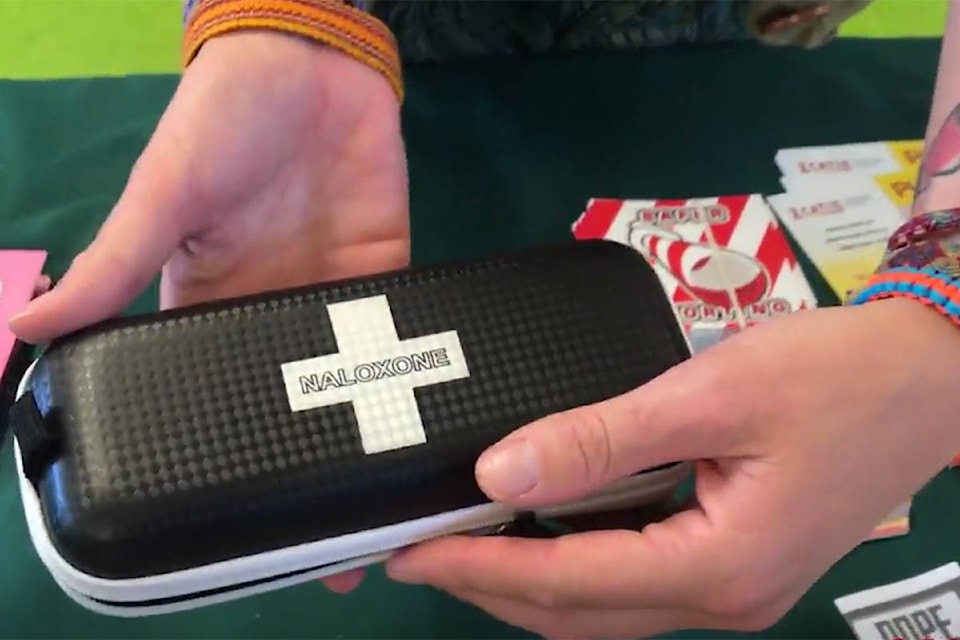Abbotsford is looking at a sharp decline in fatal overdoses this year, even as B.C. is poised to see another all-time high in the midst of a province-wide crisis.
Fatal overdoses in the Fraser Health Authority region appear relatively on par with 2017, with the health authority estimating, based on May 2018 stats, that overdoses will take the lives of 478 people this year.
That’s a one per cent drop from 2017, while the province as a whole is looking at a three per cent increase in fatal overdoses.
While the overdose rate holding steady — so far — is not exactly good news, it would also mark the first year that fatal overdoses don’t increase over the year previous since 2012, which preceded the current crisis.
Related: B.C. overdose deaths drop in June, but 100+ still dying each month
New data released last week by the B.C. Coroners Service show that plateau in the rate of fatal overdoses in the region has continued into June.
Not all communities are affected the same, however — Surrey is looking at a 32 per cent increase year over year, while Abbotsford is projected to see a 57 per cent drop in overdose deaths this year, according to the Fraser Health report.
But the reason for that decline in Abbotsford is not yet clear to health officials.
Related: 130 overdoses in one day has B.C. premier, addiction expert sounding alarm
“In the coming months, working closely with our community partners, we will continue to build upon our work in Abbotsford and throughout our region to support those who are at risk of overdose,” Fraser Health spokesperson Jacqueline Blackwell said in an email statement.
And the B.C. Coroners report also indicates a continuing trend of a heavily diminished rate of overdose deaths in Abbotsford, with only 10 deaths in the first six months of 2018. That compares with 52 deaths in Abbotsford in all of 2017, which, if the current rate holds for the rest of 2018, could mean a drop of more than 60 per cent year over year.
Although the number of overdose deaths in the region has remained effectively stable, the number of responses by emergency officials has dropped by more than a fifth in the Fraser Health Authority.
Related: 130 suspected overdoses calls in 1 day, all lives saved: B.C. paramedics
Fraser Health has released its June 2018 report on overdose statistics and the data show significant drops in B.C. Ambulance Service responses (22 per cent) and emergency department visits (24 per cent). For the paramedics, that’s at a total of 2,345 incidents for the first five months of 2018, while emergency departments in the region have received 2,024 overdose patients in the first six months.
But Blackwell said officials “cannot definitively say why” emergency visits and ambulance calls have declined or slowed faster than deaths in the region.
“We do know that 73 per cent of overdose deaths in our region take place in private residences,” she said. “In these situations, people often die with no associated call to 9-1-1 or visit to the emergency department, as no one is around to witness or respond to the overdose.”
Related: Drug overdoses continue to kill more than 3 people each day in B.C.: Coroner
Blackwell also noted that naloxone kits are increasingly becoming available to the general public, with more kits distributed and hundreds more sites for naloxone distribution.
According to the most recent data, 6,125 take-home naloxone kits were handed out in the first five months of 2018, a sharp increase (33 per cent) over the same period in 2017. As well, the number of distribution sites took a leap from 84 in May 2017 to 409 in May 2018.
“The widespread availability of Take Home Naloxone enables people to reverse an overdose in the community when one occurs, potentially avoiding a call to 9-1-1 or a trip to the hospital,” Blackwell said.
“If you see signs of an overdose, call 9-1-1 immediately and give breaths (every five seconds) until help arrives.”
